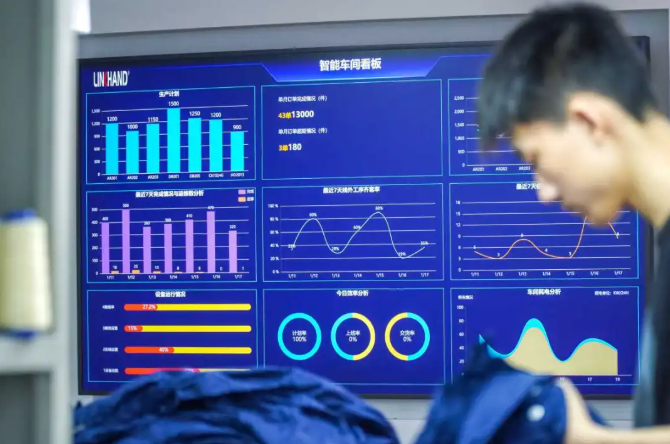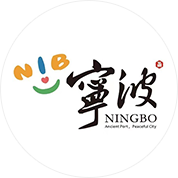Last year, Ningbo’s manufacturing industry delivered an impressive report card, achieving “double breakthroughs” in both output value and added value. The industrial added value reached 706.7 billion yuan, surpassing the 700 billion yuan mark for the first time, up 7.5% from the previous year, moving up one place in the national ranking and contributing 3 percentage points to GDP growth; the total output value of industrial enterprises above designated size exceeded 2.5 trillion yuan for the first time, an increase of 827.3 billion yuan compared with 2020, up 46.2%.
Last year, Ningbo’s manufacturing industry delivered an impressive report card, achieving “double breakthroughs” in both output value and added value.
The rapid growth data demonstrates Ningbo’s “acceleration” in developing new quality, productive forces tailored to local conditions. Since last year, by focusing on the transformation and upgrading of traditional industries, the development of key industrial clusters, and the forward-looking layout of emerging industries, Ningbo has continually surpassed itself, building stronger momentum for manufacturing development.
Traditional Industries “Transform” into New Space
Walking into the production workshop of Fotile Kitchenware, dozens of intelligent manufacturing systems and equipment—such as multifunctional six-axis robots, RFID collection systems, and CCD vision systems—work in increasingly close coordination through data networking.
On the fully automated range hood stamping line, 13 collaborative robots handle all 11 production processes. A new range hood rolls off the line every 13 seconds, boosting overall production efficiency by 30% year-on-year.
As intelligent manufacturing becomes a standard for enterprises, Ningbo continues to improve and expand its automation and digital transformation. Last year, the city implemented 2,700 digital transformation projects for industrial enterprises above a designated size, ranking first in the province, and achieved “full digital coverage” for such enterprises.
With the help of digital power, Ningbo’s traditional industries are revitalising. Last year, 17 traditional manufacturing sectors in Ningbo achieved an added value of 312.88 billion yuan, up 7.1% year-on-year. Among them, the smart home appliance industry saw added value reach 33.4 billion yuan, growing 10.3%, with production of air conditioners, air fryers, steam irons, and other appliances steadily increasing.
“To upgrade traditional industries, Ningbo must not only use intelligent manufacturing to improve efficiency, but also innovate to enhance product value,” said an official from the Municipal Bureau of Economy and Information Technology. In Ningbo, more and more enterprises are taking innovation as a breakthrough point, proactively adapting to market demand.
Data shows that last year, Ningbo added one international first (set) of equipment and three domestic first-version software products, achieving a breakthrough from zero in domestic first-version software. The total number of “three-first” products (first set, first batch, first version) hit a new high. Through transformation and upgrading, Ningbo’s traditional industries are steadily creating new development space.

Key Industries “Cluster” into New Opportunities
On February 5, the first working day after the Spring Festival holiday, Zeekr’s smart factory roared back to life, injecting strong momentum into building the core zone of the new energy vehicle (NEV) industry cluster in Qianwan New Area.
Since the first Zeekr 001 rolled off the line in 2021, the company has successively launched the 2024 Zeekr 001, Zeekr 7X, and Zeekr MIX. In December last year, the 400,000th NEV rolled off the line in Ningbo, setting the record for the fastest production of 400,000 luxury pure electric vehicles in China, achieved in just 37 months.
By introducing brands like Zeekr, Ningbo has amplified the “enterprise-attracts-enterprise” and “chain-attracts-chain” effects. Last year, the city’s NEV output reached 395,000 units, accounting for 42.5% of the provincial total. Extending from complete vehicles to the entire industrial chain, Ningbo’s energy-saving and NEV industry achieved an output value of 338.157 billion yuan, up 24% year-on-year.
It’s not just the NEV sector that’s thriving.
Last year, with the full completion of the 10-million-ton expansion and high-end new materials project at Zhenhai Refining & Chemical, the refinery’s total capacity exceeded 50 million tons, marking the completion of the largest world-class petrochemical industrial base in China.
In the magnetic materials sector, Ningbo now hosts about 22% of China’s rare-earth permanent magnet enterprises, with production accounting for more than 40% of the national total, achieving a “something from nothing” transformation in the local industry.
“Promoting the development of advanced manufacturing clusters is an important way for China to optimise and upgrade manufacturing, and to participate in the global industrial chain division of labour,” said the official from the Municipal Bureau of Economy and Information Technology. Ningbo’s magnetic materials cluster and green petrochemical cluster have been selected as a national-level cluster “team.”
Last year, the Zhejiang Eastern Industrial Machine Tool cluster and the Hangzhou Bay Modern Textile & Apparel cluster—jointly created by Ningbo—were successfully included in the national-level advanced manufacturing clusters, bringing the city’s “national team” industrial clusters to four. Meanwhile, Ningbo added two more national-level specialised SME industrial clusters—semiconductor sputtering targets in Yuyao and force sensors in Jiangbei—bringing the total to six, the highest in the province.
Emerging Industries “Plan” for a New Future
“At present, the temperature in the greenhouse is 12°C, but with the graphene electric heating film, the seedbed temperature can reach 20°C,” said Wu Zhenqi, project leader of the graphene electric heating film at the National Graphene Innovation Center, during a demonstration at a seedling greenhouse of a Beijing agricultural technology company. The two parties later reached a cooperation agreement—this marked the first application of Ningbo-produced graphene heating film in winter seedling cultivation in northern China.
Since early planning in 2008, Ningbo’s graphene industry has developed rapidly, achieving multiple national firsts. Especially since the Graphene Innovation Centre in Ningbo was upgraded from provincial to national level at the end of 2022, a series of new graphene applications and achievements have accelerated their landing in Ningbo.
Data shows that in the past two years, the National Graphene Innovation Center has formed more than 30 R&D teams, incubated over 20 graphene enterprises, and obtained more than 300 authorised patents.
Early planning and long-term layout have also benefited the integrated circuit industry.
Driven by leading enterprises such as JCET Electronic, Yongsi Electronic, Shengjisheng Semiconductor, and Rongxin Semiconductor, a wave of “new faces” like Ruijing Semiconductor, Aixin Yuanzhi, Aola Semiconductor, and Xici Electronic has emerged rapidly in recent years. Last year, Ningbo’s integrated circuit industry achieved a total industrial output value of 54.672 billion yuan, up 14.4% year-on-year.
At present, Ningbo is accelerating the iteration and upgrading of its “361” modern industrial system, launching a new round of forward-looking emerging industry layouts.
Among its three landmark industrial clusters, the green petrochemical and new materials clusters will focus on the commissioning of key projects and the construction of pilot bases in niche sectors; the NEV and high-end equipment clusters will expand production capacity while making breakthroughs in fuel cells and intelligent connected vehicles. The city will also focus on developing six strategic clusters—life and health, artificial intelligence, aerospace, and marine engineering equipment among them—and will systematically deploy new industries such as humanoid robots, cutting-edge new materials, and the low-altitude economy.
Source: Ningbo Federation of Industry and Commerce
Editor: Ye Ke



